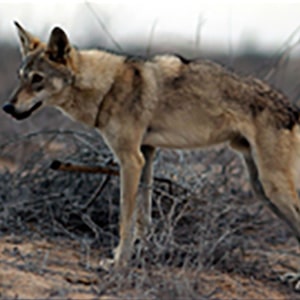Gray wolves once existed throughout much of Asia. Currently, wolves are found in many Asian countries. Main prey in this region generally consists of ungulate species, including livestock. Legal status, population numbers and trends vary country to country.
Save
Select a Location
SPECIES INFORMATION
Species
Common Name: gray wolf
Latin Name: Canis lupus
Current Wolf Population, Trend, Status
Number of wolves: About 89,000-105,000
Population trend: Stable, slightly decreasing in southern and western Asia
Legal protection: No protection in most areas

SPECIES
Common Name: gray wolf
Latin Name: Canis lupus
Tundra Wolf

Wolf
REGION 1
Common Name:
tundra wolf, Eurasian Arctic wolf
Latin Name:
Canis lupus albus
Arabian Wolf

Wolf
REGION 2
Common Name:
arabian wolf
Latin Name:
Canis lupus arabs
Russian Wolf

Wolf
REGION 3
Common Name:
Russian wolf
Latin Name:
Canis lupus communis
Caspian Sea Wolf

Wolf
REGION 4
Common Name:
Caspian Sea wolf
Latin Name:
Canis lupus cubanensis
Eurasian Wolf

Wolf
REGION 5
Common Name:
Eurasian wolf
Latin Name:
Canis lupus lupus
Desert Wolves

Wolf
REGION 6
Common Name:
Indian wolf, desert wolf
Latin Name:
Canis lupus pallipes
HUMAN RELATIONSHIPS

The Fear of Wolves: A Review of Wolf Attacks on Humans (2002) (pdf) This document is available via the Norwegian Institute for Nature Research (NINA) with a purpose to provide a foundation for the process of reducing people’s fear of wolves, and to make some management recommendations to reduce the risk of attacks. The goal was to compile existing literature and knowledge on wolf attacks on people from Scandinavia, continental Europe, Asia and North America, and to look for patterns in the cases.

The International Wolf Center uses science-based education to teach and inspire the world about wolves, their ecology, and the wolf-human relationship.
